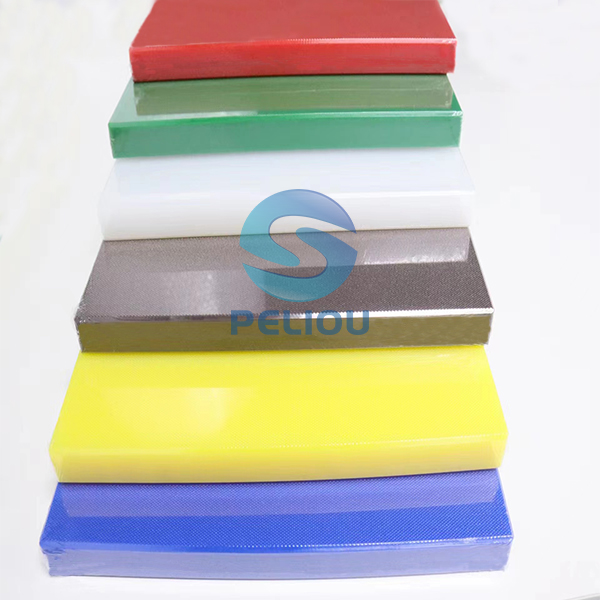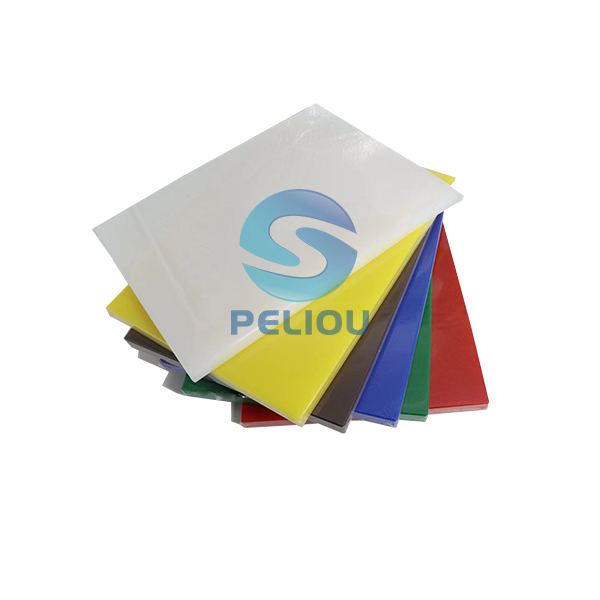Polyethylene (PE) cutting boards are widely used in both home kitchens and professional food preparation environments. They are valued for their durability, ease of maintenance, and safety. Here are some detailed aspects of PE cutting boards:


Types of PE Used
1. High-Density Polyethylene (HDPE): The most common type of PE used for cutting boards. It is durable, resistant to cuts, and does not dull knives quickly.
Advantages of PE Cutting Boards
1. Durability: Resistant to cracking, chipping, and warping. They can withstand heavy use and rough handling.
2. Non-Porous Surface: Prevents the absorption of liquids and food particles, reducing the risk of bacterial contamination.
3. Ease of Cleaning: Can be easily washed with soap and water, and most are dishwasher safe.
4. Knife-Friendly: PE cutting boards are gentle on knife edges, preserving the sharpness of blades longer than glass or ceramic boards.
5. Affordable: Generally more cost-effective compared to cutting boards made from wood, bamboo, or composite materials.
Considerations for Use
1. Color Coding: Many PE cutting boards come in different colors to help prevent cross-contamination. For example:
- Red for raw meat
- Green for fruits and vegetables
- Yellow for poultry
- Blue for fish
- White for dairy and bread
2. Surface Maintenance: Although PE cutting boards are durable, they can develop knife scars over time. These scars can harbor bacteria if not properly cleaned. Regular sanitizing and occasional resurfacing (sanding) can prolong their usability.
3. Thickness and Size: Choose a board that fits your workspace and is thick enough to provide stability. Thicker boards are less likely to slip and can handle more vigorous chopping.
Cleaning and Sanitization
- Daily Cleaning: Wash with hot, soapy water and rinse thoroughly. Most PE cutting boards are dishwasher safe, which provides a convenient way to sanitize them.
Comparison with Other Materials
- Wood: Wooden cutting boards are aesthetically pleasing and have natural antimicrobial properties, but they require more maintenance (oiling, hand washing) and can be more prone to damage.
- Bamboo: Bamboo is harder than wood and eco-friendly, but it can be tougher on knives and may crack over time if not properly maintained.
- Glass: Glass cutting boards are easy to clean and very sanitary, but they are extremely hard on knives and can cause blades to dull quickly.
- Composite: Composite boards are durable and resistant to cuts, but they can be expensive and also hard on knives.
Best Practices
- Rotate Use: Use different boards for different types of food to avoid cross-contamination.
- Storage: Store cutting boards in a dry place, ideally upright, to prevent moisture buildup and potential bacterial growth.
By considering these factors, you can choose the right polyethylene cutting board that fits your needs and ensures a safe and efficient food preparation process.